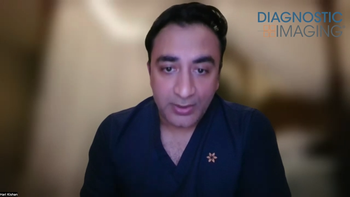
Multicenter lung cancer trial updates data supporting RFA
New data from a multicenter lung cancer trial reveals two-year, cancer-specific survival rates of 92% for a subset of patients treated with radiofrequency ablation. In addition, RFA provides effective local control for both nonresectable non-small cell lung cancers and lung metastases, according to findings from the Radiofrequency Ablation of Pulmonary Tumors Response Evaluation (RAPTURE) trial presented at the RSNA meeting.
New data from a multicenter lung cancer trial reveals two-year, cancer-specific survival rates of 92% for a subset of patients treated with radiofrequency ablation. In addition, RFA provides effective local control for both nonresectable non-small cell lung cancers and lung metastases, according to findings from the Radiofrequency Ablation of Pulmonary Tumors Response Evaluation (RAPTURE) trial presented at the RSNA meeting.
The prospective, multicenter trial is designed to evaluate the feasibility, safety, and effectiveness of RFA for treating lung malignancies in patients ineligible for surgery or other anticancer treatments. RFA was used to treat NSCLC and metastatic lesions up to 3.5 cm in diameter in 107 patients.
Three-month follow-up on a lung tumor treated with radiofrequency ablation. (Provided by R. Lencioni)
RFA acheived local tumor control in 88% of cases. The 12% percent of patients who experienced tumor progression at the ablated site were successfully treated again, and the residual tumor was destroyed, said Professor Riccardo Lencioni of the Universita di Pisa.
The procedure proved most effective for patients with colorectal metastases, Lencioni said. The overall two-year survival rate for the 53 patients in this category was 62%, and median survival time was 29 months. The cancer-specific two-year survival rate was 82%.
The study also evaluated 33 patients with stage I, stage II, stage III and stage IV NSCLC. The two-year survival rate for all patients with NSCLC was 48%, and median survival time was 21 months. A separate analysis of 14 patients with stage IA NSCLC found patients treated with RFA had a 92% two-year cancer-specific survival rate.
Complete tumor ablation occurred in 86% of stage IA NSCLC patients. One patient experienced local tumor progression after the second ablation.
The data from RAPTURE suggests RFA is a viable treatment method for patients who cannot tolerate surgery or radiation therapy, Lencioni said. Further study is recommended.
Newsletter
Stay at the forefront of radiology with the Diagnostic Imaging newsletter, delivering the latest news, clinical insights, and imaging advancements for today’s radiologists.






























